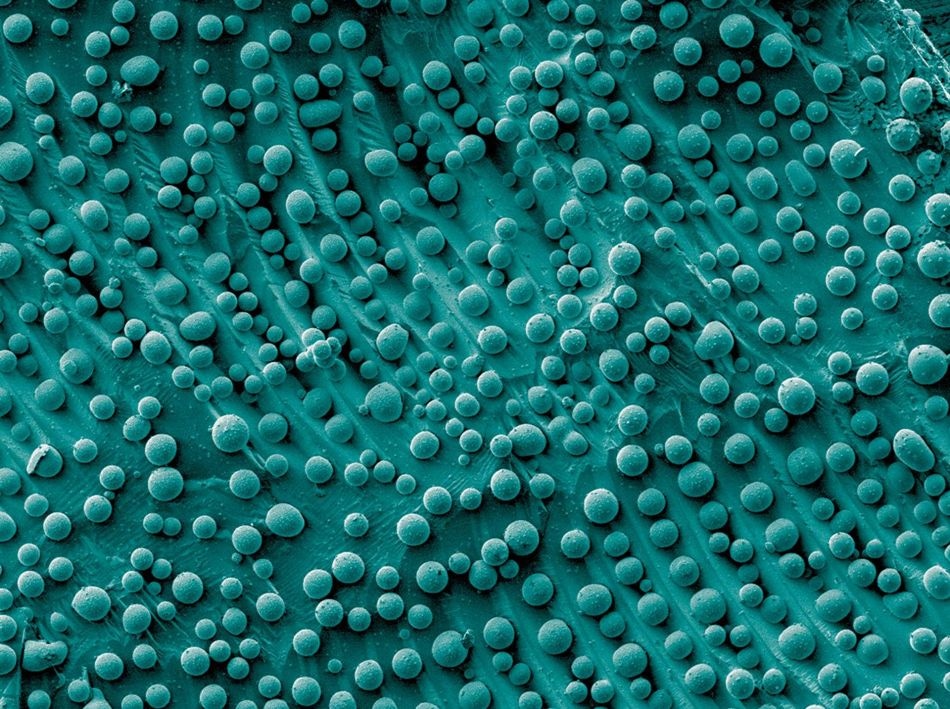Aug 24 2018
Nanoparticle manufacturing is indeed proving the adage that “good things come in small packages.” This process refers to the development of material units that measure less than 100 nanometers in size, that is, 100,000 times smaller than a marble.
 Electron micrograph showing gallium arsenide nanoparticles of varying shapes and sizes. Such heterogeneity can increase costs and limit profits when making nanoparticles into products. A new NIST study recommends that researchers, manufacturers and administrators work together to solve this, and other common problems, in nanoparticle manufacturing. (Image credit: A. Demotiere, E. Shevchenko/Argonne National Laboratory)
Electron micrograph showing gallium arsenide nanoparticles of varying shapes and sizes. Such heterogeneity can increase costs and limit profits when making nanoparticles into products. A new NIST study recommends that researchers, manufacturers and administrators work together to solve this, and other common problems, in nanoparticle manufacturing. (Image credit: A. Demotiere, E. Shevchenko/Argonne National Laboratory)
Present-day engineered nanoparticles are key components of everything, right from the quantum dot nanocrystals coloring the vivid displays of next-generation televisions to the tiny bits of silver aiding bandages protecting against infection. Conversely, commercial ventures looking to gain from these miniscule building blocks face several quality control concerns, which need to be addressed, or else they can increase production costs, reduce efficiency, and restrict commercial effect of the products that integrate them.
In order to help overcome these barriers, the nonprofit World Technology Evaluation Center (WTEC) and the National Institute of Standards and Technology (NIST) propose that nanoparticle manufacturers, researchers, and administrators should “connect the dots” by taking into account their shared complexities broadly and dealing with them mutually rather than separately. To achieve this, knowledge has to be transferred across disciplines, actions between organizations need to be coordinated, and resources should be shared to enable solutions. A new paper in the journal ACS Applied Nano Materials describes the recommendations.
We looked at the big picture of nanoparticle manufacturing to identify problems that are common for different materials, processes and applications. Solving these problems could advance the entire enterprise.
Samuel Stavis, NIST physical scientist and Lead Author
The new paper gives a framework to understand these problems in a better way. It is the culmination of a research undertaken by a NIST-organized workshop that concentrated on the essential challenge of mitigating or reducing heterogeneity, the unintentional differences in nanoparticle shape, size, and other properties that take place during their production.
“Heterogeneity can have significant consequences in nanoparticle manufacturing,” stated Jeffrey Fagan, NIST chemical engineer and co-author.
The authors observed in their paper that the most gainful innovations in the manufacturing of nanoparticles reduce heterogeneity during the early phases of the operation, thus lowering the requirement for subsequent processing. This simplifies characterization, reduces waste, and enhances the incorporation of nanoparticles into products, all of which ultimately save cost.
To illustrate the point, the authors compared the production of carbon nanotubes and gold nanoparticles. For gold, the costs related to initial synthesis can be high; however, the similarity of the nanoparticles manufactured needs less characterization and purification, they stated. Hence, gold nanoparticles can be made into a wide range of products, for example, sensors, at much lower costs. The more heterogeneous carbon nanotubes, on the other hand, are comparatively less costly to synthesize but need more processing to produce those with required properties. The extra costs at the time of manufacturing presently make nanotubes viable for high-value applications, for example, digital logic devices.
Although these nanoparticles and their end products are very different, the stakeholders in their manufacture can learn much from each other’s best practices. By sharing knowledge, they might be able to improve both seemingly disparate operations.
J. Alexander Liddle, NIST materials scientist and co-author
According to the authors, identifying ways like this to connect the dots is extremely significant for new ventures looking to transfer innovative nanoparticle technologies from lab to market.
Nanoparticle manufacturing can become so costly that funding expires before the end product can be commercialized. In our paper, we outlined several opportunities for improving the odds that new ventures will survive their journeys through this technology transfer ‘valley of death.
Michael Stopa, WTEC nanotechnology consultant and co-author
Lastly, the authors looked at how innovations and manufacturing problems are impacting the ever-growing number of applications for nanoparticles, including those in the areas of energy, materials, electronics, and health care.